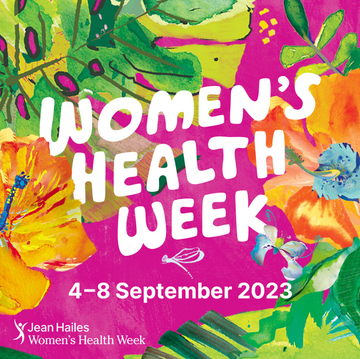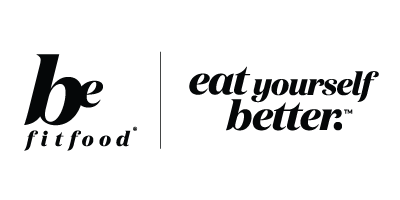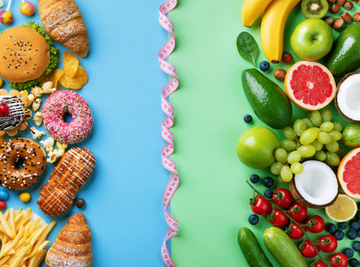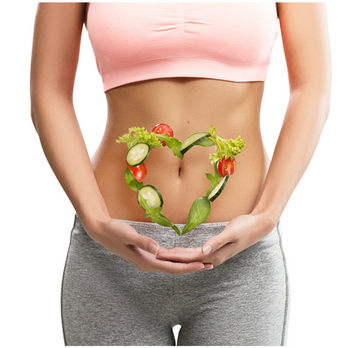Health Articles
WOMEN'S HEALTH WEEK

In light of the upcoming women’s health week commencing on September 4th, we aim to address some of the predominant nutritional challenges faced by women. Distinctions in women's key life stages and anatomy warrant unique dietary considerations to prevent deficiencies and adverse health outcomes.
Iron intake and anemia
Iron deficiency anemia affects 30% of the global population, particularly children and women of reproductive age. (1) Iron is a mineral found mostly in the hemoglobin of red blood cells (RBC) and assists oxygen transportation, DNA synthesis and electron transport. (2) When iron deficiency occurs, the oxygen carrying capacity of RBC’s is reduced leading to symptoms such as fatigue, pale skin, headaches and heart palpitations. (1)
Proper absorption of iron and its bioavailability in the body is dependent on a myriad of factors. The form of iron, heme (animal sources) or non-heme (plant-based sources), directly dictates its bioavailability. (3) Consuming heme iron-rich sources like red meat increases absorption as specific heme transporters allow it to pass more efficiently into the bloodstream. (3) Whilst iron in plant-based sources may only be absorbed up to 10%. This is due to the inhibitory effects of other naturally occurring compounds like phytates and polyphenols that bind with iron and reduce its absorption capacity. (3)
The requirements for iron in women are augmented by the menstruation process. This is highlighted by the almost two-fold increase in the recommended daily intake (RDI) for iron from 8mg/day to 15mg/day for girls at the age of menarche (14-18 years). (5) The rise is due to a combination of increased blood volume in adolescents and the onset of menstruation. Thus, it is imperative for women to consume sufficient dietary iron to prevent anemia and compensate for monthly blood losses.
Tips for increasing iron intake include:
Consume heme iron food sources were possible (red-meat, fish and poultry) (2)
If dietary or cultural preferences do not permit this, consider talking to your GP about taking an iron supplement (2)
Eat foods that promote iron absorption such as vitamin C (2)
Improve bioavailability of non-heme iron through cooking methods – heating, soaking and milling have been identified in reducing the activity of inhibitory compounds (2)
Calcium and its importance for postmenopausal women and osteoporosis prevention
Calcium is an abundant mineral in the body with roles in muscle contraction, nerve impulse conduction, and hormone production. However, perhaps its most recognized role is in skeleton mineralization – or building strong bones. (6) Structurally, bones are a highly organized crystal matrix of mostly calcium and phosphate, and they undergo a continuous remodeling process to maintain their density. (6)(7) Whilst achieving optimal bone mass is dependent on genetics, hormones and physical activity, dietary calcium is a key nutritional factor that aids healthy bone mineralization. (6)
With age, there is a natural decline in bone mass which puts older people at risk for fractures and osteoporosis. (7) The incidence of bone fractures, particularly hip and spine, leads to a reduction in mobility, decreased quality of life, and increased risk of mortality. (7)
Weakened bone structure is exacerbated by the effects of menopause in women. The reduction in estrogen impacts the bone turnover rate and bone resorption begins to exceed bone deposition. (7) This deficiency results in the degradation of trabecular bone (sponge like component) specific to menopausal women. The second phase involves the degradation of both trabecular and cortical bone (dense, inner bone) which is not gender specific.
The synergetic effects of age-related bone loss and menopausal-related degradation, result in a higher prevalence of osteoporosis in post-menopausal women then age-matched men. Hence, calcium intake in this demographic is fundamental in delaying these effects. This is again reflected in the RDI as the calcium requirement for women over 50 years increases from 1000mg/day to 1300mg/day. This translates practically to 4 serves of dairy a day, which may look like 2 cups of milk, 2 slices of cheese and ¾ cup of yoghurt. (8)
How Be Fit Food can help
The meals at Be Fit Food are designed to meet the RDI requirements of all major nutrients including iron and calcium. The RDI encompasses the amount of nutrient required to meet the needs of 97-98% of a healthy age and gender specified subgroup of the population. Hence, consumption of one of our programs is guaranteed to provide a comprehensive range of key micronutrients that are protective against the effects of diet-related diseases.
References:
1. Kumar A, Sharma E, Marley A, Samaan MA, Brookes MJ. Iron deficiency anaemia: Pathophysiology, assessment, Practical Management. BMJ Open Gastroenterology. 2022 Jan 7;9(1). doi:10.1136/bmjgast-2021-000759
Abbaspour N, Hurrell R, Kelishadi R. Review on iron and its importance for human health. J Res Med Sci. 2014 Feb;19(2):164-74. PMID: 24778671; PMCID: PMC3999603.
Piskin E, Cianciosi D, Gulec S, Tomas M, Capanoglu E. Iron absorption: Factors, limitations, and improvement methods. ACS Omega. 2022 Jun 10;7(24):20441–56. doi:10.1021/acsomega.2c01833
Young I, Parker H, Rangan A, Prvan T, Cook R, Donges C, et al. Association between Haem and non-haem iron intake and serum ferritin in healthy young women. Nutrients. 2018 Jan 12;10(1):81. doi:10.3390/nu10010081
1. National Health and Medical Research Council. Iron Nutrient Reference Values [Internet]. 2021 [cited 2023 Aug 22]. Available from: https://www.eatforhealth.gov.au/nutrient-reference-values/nutrients/iron
Vannucci L, Fossi C, Quattrini S, Guasti L, Pampaloni B, Gronchi G, et al. Calcium intake in Bone Health: A focus on calcium-rich mineral waters. Nutrients. 2018 Dec 5;10(12):1930. doi:10.3390/nu10121930
Ji M, Yu Q. Primary osteoporosis in postmenopausal women. Chronic Diseases and Translational Medicine. 2015 Mar 21;1(1):9–13. doi:10.1016/j.cdtm.2015.02.006
Eat For Health. Milk, yoghurt, cheese and / or their alternatives (mostly reduced fat) [Internet]. 2021 [cited 2023 Aug 22]. Available from: https://www.eatforhealth.gov.au/food-essentials/five-food-groups/milk-yoghurt-cheese-andor-their-alternatives-mostly-reduced-fat




